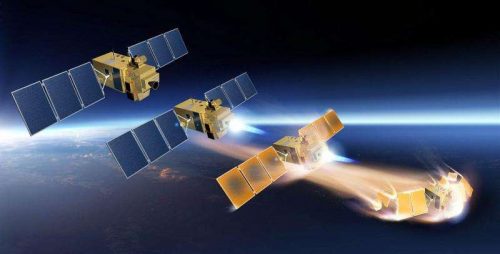As part of the European TeSeR project, scientists and engineers will investigate three technologies for removing satellites from orbit: solid fuel propulsion, frictional reinforcement and an electro-dynamic belt

An ambitious European project aimed at cleaning up space for future generations has begun to operate. Self-Removal of Spacecraft (TeSeR) He intends to develop systems that will allow spacecrafts that are no longer in use to be inserted into the atmosphere to prevent them from colliding with other space vehicles.
The project is funded by the Horizon 2020 program, the research and innovation program of the European Union. To this end, the TeSeR consortium led by Airbus was established with a budget of 3.1 million dollars. Universities and companies from Great Britain, Germany, Denmark and Italy are partners in the consortium. Airbus will be responsible for project management, technical coordination and development of innovative access control systems.
The project will focus on the development of a removal module for spacecraft. Airbus intends to develop a functional design for systems that will perform the task with different technologies and produce a prototype model on Earth, which will demonstrate the main functions.
As part of the TeSeR project, scientists and engineers will investigate three different takeoff technologies: solid fuel propulsion, traction enhancement systems and electrodynamic coupling. Each technology has its own advantage and it will be necessary to research when and how to use them.
"Depending on the trajectory, mass, shape, structure of a spacecraft, different removal technologies may be utilized. For example, heavy satellites in low orbit require a controlled re-entry over a sitting surface while small satellites burn up in the atmosphere," said Matias Pikelj who heads the project on behalf of Airbus.
According to him, the TeSeR module will not only act as a "smart interface" between the spacecraft and the removal system, but will also be equipped with the appropriate level of autonomy.
"A minimum level of autonomy - for example, in the provision of communication and power - is required to ensure the removal of spacecraft in cases where the spacecraft suffers a complete failure that causes the loss of control over it," says Pickley.
Through the launch of the TeSeR project, Europe seeks to find innovative and cost-effective solutions that will enable disposal of satellites after their mission and upper stages of launchers - and this in order to comply with emerging international and European guidelines.
The project will also include performing a thorough qualitative and quantitative mission analysis of existing technologies. Furthermore, TeSeR can be used as a lever to propose changes in legal aspects of the spacecraft licensing standard including the improvement of international guidelines and standards for space debris reduction.
